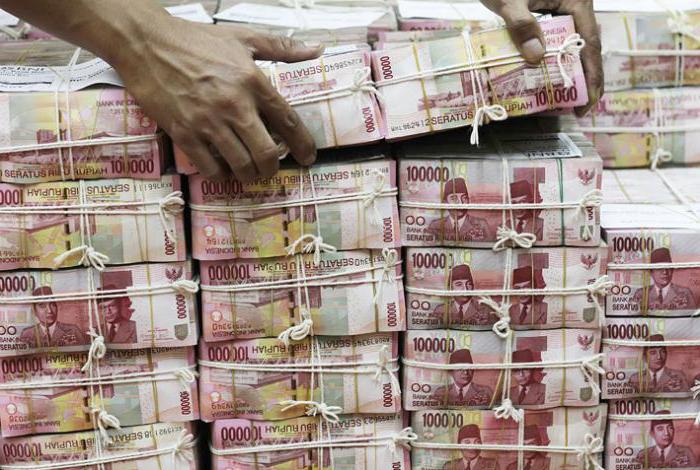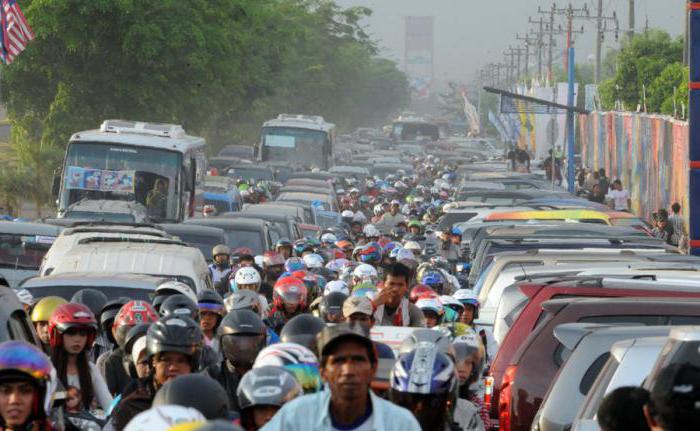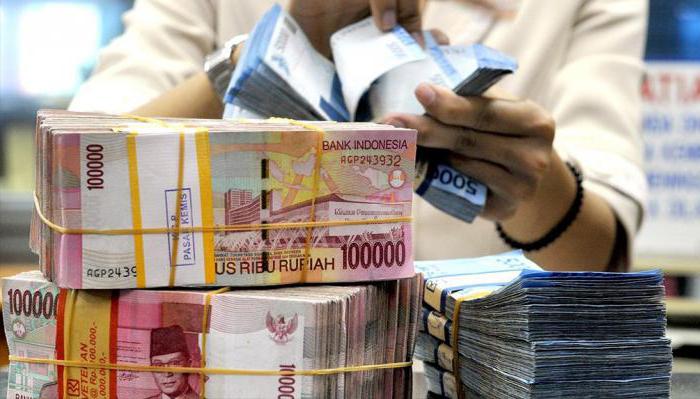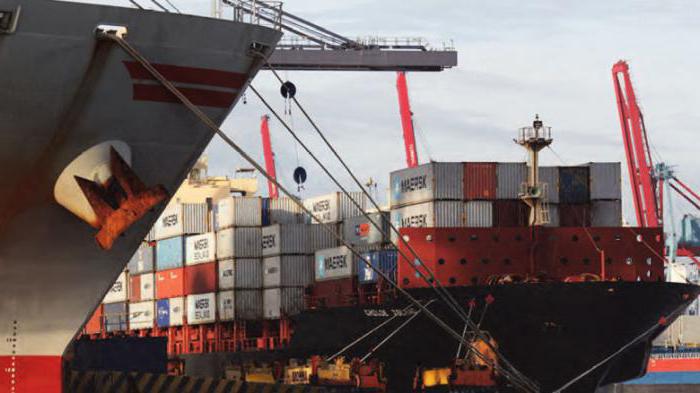Indonesia lies in Southeast Asia, is surrounded by the Pacific and Indian oceans, and is considered today one of the most popular places in the world. The very name "Indonesia" comes from the Latin Indus ("India") and the Greek nesos ("islands").

The islands
The state lies on almost 18 thousand island patches, a combined size of almost 2 million square meters. km However, most of the islands are nameless. Many of them have long been widely popular. Indonesia has a land border only with Malaysia.
Population
Religiously, Indonesia has been the largest Muslim power since the Middle Ages. Supporters of Allah make up about 87% of the population. A characteristic feature of this state was that it became a civilization whose population speaks 580 languages and dialects. In the modern era, Indonesia, with a population of 234 million people, is one of the most numerous countries with a clear prospect of further growth.
Climate
In the "land of many islands", the nature of the weather largely depends on the equator, passing almost in the middle of the state. The climate is raw and hot. Throughout the year, the weather is constant: usually during the day the temperature remains at + 25 degrees. Due to the predominance of moisture and heat, a significant territory of the country is occupied by lush vegetation. The dominance of water leads to the fact that the swamp is a common component of the islands. Mountain and flat terrain also occupy a large territory, approximately equally. Due to the large number of flora, Indonesia is home to many plants and animals.
Economic sphere
The economy of Indonesia (briefly) has developed industry and agriculture. There is the largest plantation agricultural sector in Asia and a developed mining industry. Indonesia's industries are based on a market structure with great government value. There are over one hundred and sixty firms in the country controlled by government agencies. Government is particularly important in such sectors as raw materials, energy, fuel, and agriculture. During the dire economic downturn of 1997, the government began to control a substantial portion of private capital by purchasing broken financial loans and dividing into parts the debt of companies.

Development dynamics
After the global crisis of 1997, which hit Indonesia's economy painfully and lasting several years of stagnation, the 2010s began with the acceleration of the country's economy. Investing in economic structures and increasing population costs contributed to accelerating the pace of the economy. The automotive industry felt an improvement in living standards, and car purchases increased in it.
Experts note that in the near future the economy of Indonesia expects a strong breakthrough, which will allow it to be among the leaders of the world economy. By the middle of the twenty-first century, the country will move in eighth place in terms of production, overtaking all Western European countries.
Industry Indonesia
If we talk about the economy in the country of Indonesia briefly, the leading industry of this Asian country on the part of large islands is oil and gas (primarily for export). In large cities, industrial enterprises related to the processing of raw materials, metal, and chemistry developed. Almost 70% of workers work on the production of agricultural raw materials (food, fabrics).

The country has large deposits of ores of ferrous and non-ferrous metals, coal, precious metals.On the basis of oil and gas production, the country's energy system is developing.
In the field of industrial reorganization, the state is solving the problem of increasing the role of import-substituting enterprises and the task of introducing machine labor in the agricultural sector along with the reduction of manual labor. In order to reduce the import of products in recent years, a requirement has been added to increase the output of food products, fabrics, fertilizers, and cement. The most serious state-owned companies are enterprises for processing agricultural products and petrochemicals. A significant contribution to the increase in the industrial base belongs to medium and small family capital. In this area, entrepreneurs from China are especially distinguished - they have purchased a significant share of industrial equipment and produce a variety of products - from wood products to fabric goods.
Island industry light industry
The main industry of the Indonesian economy, light industry, operates on imported products. Enterprises producing yarn in the hands of foreign firms or the government, and firms that produce material from cotton and other raw materials are small businessmen, because of this, interruptions occur. The creation of batik is made on about. Java. A significant proportion of the fabric is created in the craft environment, at the same time there are a large number of companies for the industrial production of batik.
 In the economy of Indonesia, medieval production is still developing in the 20th century: the production of batik (both industrial and artisanal), forged products from silver, pottery, art carving on the bone, twisting of lashes into rugs, hats and more. Significant impact for Indonesia is imported products. It operates the country's main industry - light industry. The yarn enterprises are in the possession of foreign firms or the government, and the firms working on the final product are subordinate to the small family business. The release of batik is an Indonesian analogue of printed textile, occurring in the central regions of Java. Although most of the batik is produced at home, there are many industrial enterprises producing fabric.
In the economy of Indonesia, medieval production is still developing in the 20th century: the production of batik (both industrial and artisanal), forged products from silver, pottery, art carving on the bone, twisting of lashes into rugs, hats and more. Significant impact for Indonesia is imported products. It operates the country's main industry - light industry. The yarn enterprises are in the possession of foreign firms or the government, and the firms working on the final product are subordinate to the small family business. The release of batik is an Indonesian analogue of printed textile, occurring in the central regions of Java. Although most of the batik is produced at home, there are many industrial enterprises producing fabric.
Indonesia has been in OPEC since 1962 and refused membership in 2008. Nowadays, the Indonesian economy is successfully borrowing the activities of other countries in the region, improving technologically difficult industries, in which up to ninety percent of products are exported.
Indonesia Agriculture
Speaking about the economy of Indonesia briefly, one cannot fail to mention agriculture. Equatorial nature and frequent rains are a good means for the formation of the agricultural sector in the country. However, so far only ten percent of the territory is cultivated in the state. Active farming is only on individual lands. A significant proportion of the cultivated territory in Java is left under rice. Other plants are cultivated, albeit on a much smaller scale. Artificial irrigation is carried out in thirty percent of the territory.

The formation of the agricultural sector in Sumatra is not so massive. Although the dynamics of the economy of Indonesia can be traced here. Up to fifty percent of the existing plantations located on the northeast coast have already been planted. Near Medan there are numerous plantations that grow equatorial crops. Over time, there has been a shift in attention from growing rice to the consumption of other cereal plants, but the population still maintains a traditional set of products. Indonesia - a country's economy cannot be seen without government influence.
The state is striving to launch a set of actions by Bimingan Massal, or Bimas (the “Leadership of the Masses”), which makes it possible to increase rice crops by using highly productive crops and fertilizers.Rubber is the first exported agricultural crop, but so far it is not possible in the country to make a large role for machinery in agriculture. To date, the cultivation of some other crops has risen.
Fishing
How the economy is developing Indonesia is also evident in fisheries. It plays a small role. Japan has shown support in increasing the consumption and export of fish products. A significant proportion of the caught river fish is caught from irrigation canals; ocean fish make up a large part of the total possessed volume.
Transport Indonesia
How developed the economy of Indonesia can be understood by considering the transport sector. Since Indonesia is a country located on a large number of small islands, ships and ferries, and now air transport, have the main focus. The lack of maritime and air infrastructure in some regions of the state contributes to economic stagnation and an irregular rise in various provinces of Indonesia. On the islands themselves, local transport dominates: buses, taxis. Many ride bicycles.

Transport systems of the islands of Java, Madura and Sumatra respond to the requirements of the inhabitants and economy of Indonesia. Both automobile and railway routes were made in Java, there is an advance for another increase in their structure, but the emphasis in the transportation of goods has been strengthened for road transport due to the small distances between the manufacturer and consumers, retail outlets. However, there is a real opportunity for future strengthening of the railway structure. Thus, the small territory of the island, along with a large number of inhabitants, is a factor in the delay in the development of paths for cars.
The natural specificity and variability of the direction of cargoes reduced the scale of transportation, which has little potential in the remote transportation of goods. A significant proportion of hard-surfaced tracks are found on the islands of Java and Madura. The relatively vast track areas in Sumatra and Bali maintain a hard surface. Western and Central Kalimantan and Sulawesi have only tiny sections of paved roads, while Irian Jaya and the Moluccas do not have roads of this class at all.
A significant part of large settlements appeared and expanded as port centers. The seas near Indonesia are relatively quiet, the state lies behind a strip of natural adversities. For ships calling at the port, an overdeveloped or high-tech infrastructure is not needed; for loading and unloading operations, an ordinary anchor is enough. The state has ports that can meet ships of more than 500 tons.
Indonesia in the global economy
The economy of Indonesia rests mainly on the sale of oil in the world market. The next most significant export product for Indonesia will be natural rubber. Significant for export is wood and its products, construction materials. Finally, Indonesia exports equatorial agricultural products, very popular in the world market.
The main partners of Indonesia are the United States of America, some neighboring Asian countries.
Tourism in Indonesia
Tourism remains one of Indonesia's leading industries. Good equatorial nature, popular historical and cultural monuments of the country attract guests from many foreign countries. Tourists from all over the world go to Indonesia.
As for natural sites, Indonesia’s most significant elevation is Punkcak Jaya. It is located in the highlands of Papua New Guinea. Indonesia was also the cradle of the Javanese rhino, which is not observed in any other locality.
The island of Bali has long been considered the most famous place in Indonesia. Good areas of this beautiful corner attract visitors and hunters of amazing nature from all the continents of the Earth.In addition, the island also has a fairly developed tourist infrastructure, which allows travelers to feel comfortable. Tourists will find a large number of wonderful places. Of particular interest are cultural evenings and dances, beautiful leather items, music, the sounds of which are beaten off by the lower limbs.

Jakarta, the capital of Indonesia, ranks 11th in the world in terms of population. It contains a significant number of tourist attractions that attract visitors from all over the world. These are just some of the places you can visit in Indonesia.